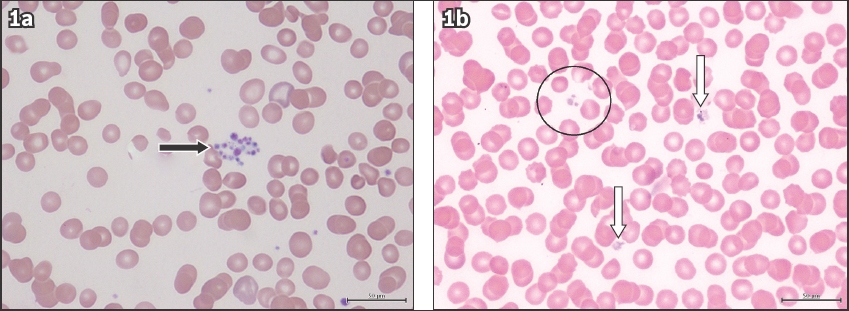Dear Sir,
In the original study on isolated thrombocytopenia in childhood,(1) pseudothrombocytopenia was not included. Two cases of pseudothrombocytopenia were detailed in a prior publication.(2) That said, Sriwijitalai and Wiwanitkit’s comments(3) are important, as they are about pre-analytical, technical issues rather than genuine pathology. Although the mechanism is not fully understood, the occurrence of pseudothrombocytopenia is most likely a multifactorial phenomenon in which pre-existing autoantibodies are allowed to agglutinate platelets in vitro during sample storage, in a time-, temperature-, anticoagulant- and disease-dependent process.(4) However, the condition can be readily identified by examination of the blood film (
We recently encountered a four-month-old boy whose automated full blood count showed isolated thrombocytopenia of 17 × 109/L with no clinical signs of bleeding. Examination of the blood film revealed a striking absence of normal platelets on the whole film, while the remaining platelets appeared degranulated and scattered in small clumps (
Fig. 1
Photomicrographs of peripheral blood films show (a) typical platelet clumping (black arrow) in a case of pseudothrombocytopenia, probably due to exposure to ethylenediaminetetraacetic acid anticoagulant during storage; and (b) degranulated platelets (white arrows) with some appearing as small clumps (circled) in a four-month-old child (Wright’s, × 100).

Keeping up laboratory quality can be challenging, but the importance of a carefully examined peripheral blood film cannot be overemphasised, whether the thrombocytopenia is spurious or genuine.
Yours sincerely,


